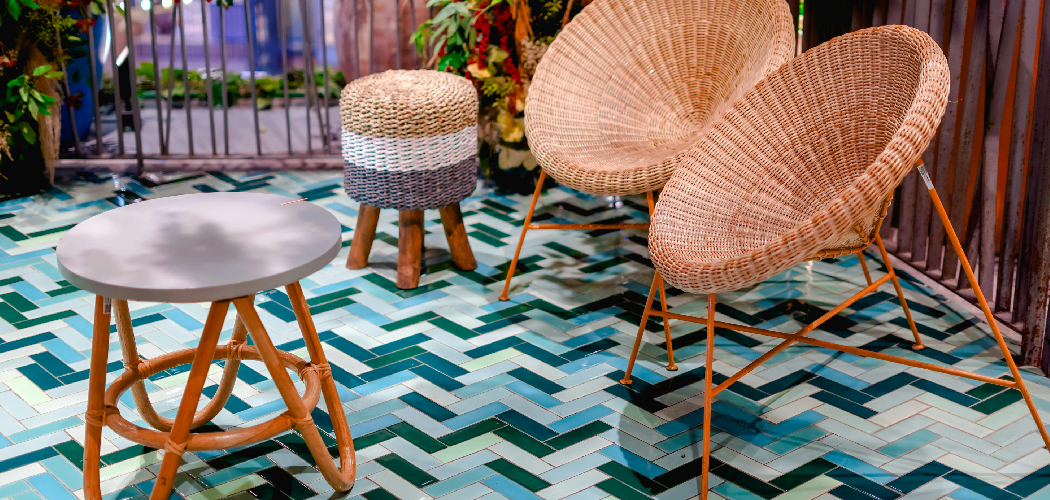Are you looking for ways to bring back the charm of your old rattan furniture? Look no further! This guide will discuss some easy and effective ways to restore your rattan pieces and make them look as good as new.
How to restore rattan furniture is a fulfilling project that can breathe new life into your beloved pieces, preserving their beauty and extending their utility for years to come. Rattan, a type of climbing palm native to tropical regions, is admired for its flexibility, durability, and natural aesthetic. Over time, however, rattan furniture can become worn, faded, or damaged due to exposure to the elements and everyday use.
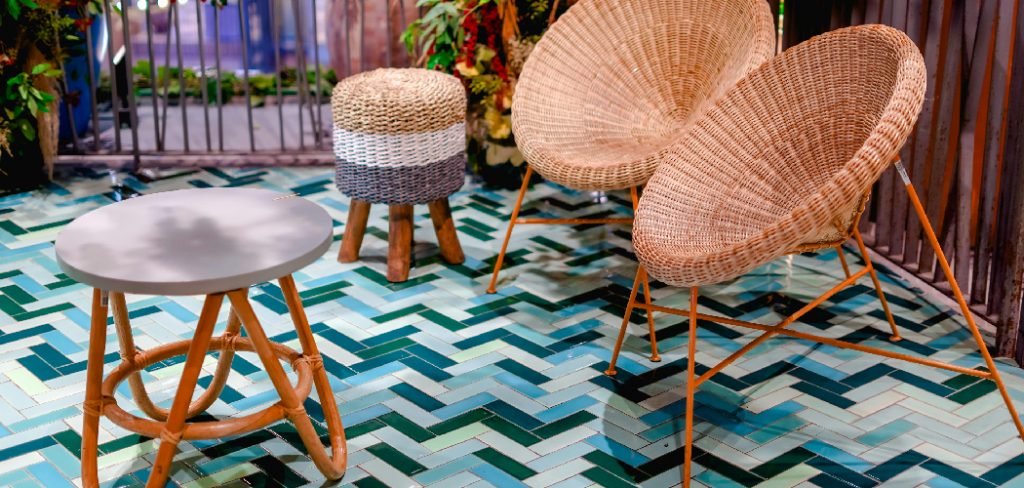
With the right techniques and a bit of effort, you can restore your rattan furniture to its former glory, ensuring it remains a cherished part of your home decor.
What Will You Need?
Before you begin the restoration process, gathering all the necessary tools and materials is essential. Here’s a list of items you may need:
- Soft-bristled brush or toothbrush
- Mild dish soap or vinegar
- Sponge or cloth
- Sandpaper (fine grit)
- Clear varnish or paint for sealing
- Optional: Rattan repair kit or wood glue for more extensive damage
You can start the restoration process once you have all the necessary supplies.
10 Easy Steps on How to Restore Rattan Furniture
Step 1: Clean The Furniture
The first step in restoring rattan furniture is to clean it thoroughly. Over time, dust, dirt, and grime can build up in the furniture’s crevices, dulling its appearance. Using a soft-bristled brush or toothbrush, gently remove any debris from the surface and between the woven strands.
Next, mix mild dish soap or vinegar and warm water in a bucket or container. Wipe down the entire piece of furniture using a sponge or cloth dipped in this solution. Be careful not to saturate the rattan with excess water, which can cause it to warp or crack.
Step 2: Sand The Furniture
After thoroughly drying your rattan furniture, gently sand the surface using fine grit sandpaper. This will help smooth out any rough patches or imperfections and prepare the surface for sealing or painting. Be sure to wipe away any dust or debris after sanding.
Step 3: Repair Any Damage
If your rattan furniture has any significant damage, such as broken or loose strands, this is the time to address it. You can purchase a rattan repair kit or use wood glue to fix any issues. Follow the instructions carefully and allow enough time for the repairs to dry before moving on to the next step.
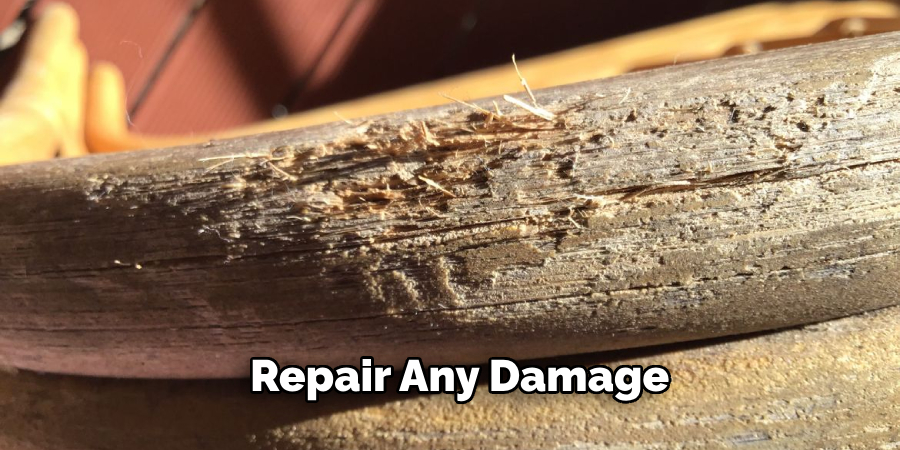
Step 4: Apply Varnish or Paint
Once your rattan furniture is clean sanded and all repairs have been made, it’s time to protect and beautify it with a coat of varnish or paint. Applying varnish enhances the natural color of the rattan and provides a protective layer that guards against wear and tear. If you prefer a different look, consider painting the rattan in a color that complements your existing decor.
To apply varnish, choose a clear, water-resistant variety. Using a paintbrush or spray can apply an even coat of varnish to the entire piece of furniture, covering all surfaces, including the undersides and any hard-to-reach areas. For best results, apply multiple thin coats, allowing each coat to dry completely before adding the next. This ensures a smooth, even finish that will last.
If you decide to paint your rattan furniture, start by selecting high-quality, outdoor-grade paint, especially if the furniture will be used outside. Begin with a coat of primer to ensure the paint adheres properly.
Step 5: Reinforce The Structure
Over time, the structural integrity of rattan furniture can weaken, especially in joints and bindings. To reinforce the structure, inspect all connections and bindings closely. Use wood glue or a rattan repair kit to secure loose joints, ensuring all parts are firmly attached. If necessary, rewrap any bindings with new rattan or similar material to restore the original strength. Allow sufficient drying time for the glue and repairs before using the furniture.
Step 6: Rehydrate The Rattan
It’s important to rehydrate the material periodically to keep your rattan furniture flexible and prevent it from becoming brittle. You can do this by lightly misting the rattan with water using a spray bottle and then covering it with a damp cloth for a few hours. You can also use a mixture of equal parts boiled linseed oil and turpentine, which helps to condition the rattan and gives it a glossy finish.
Step 7: Add Cushions or Seat Pads
Adding cushions or seat pads to your rattan furniture not only enhances its comfort but also helps to protect the rattan from wear and tear, ultimately prolonging its life. When choosing cushions, consider durable and weather-resistant fabrics, especially if your furniture will be placed outdoors. Materials such as acrylic or polyester are excellent choices as they can withstand exposure to sunlight and moisture without fading or deteriorating. Opt for cushions with removable, washable covers to make maintenance easier and keep your furniture looking fresh.
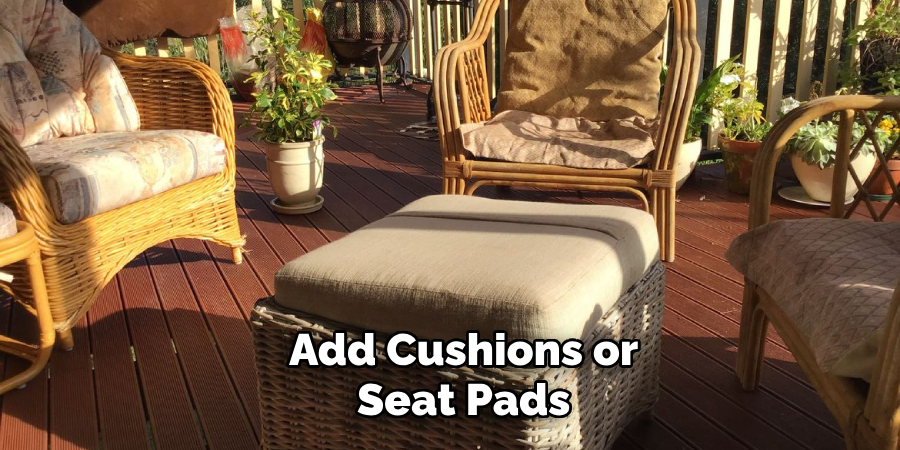
Selecting the right thickness for your cushions is crucial for optimal comfort. Thicker cushions provide better support and can make sitting for extended periods more enjoyable. Make sure to measure your furniture accurately to ensure a proper fit for the cushions or pads you purchase.
Step 8: Maintain Regularly
Establish a regular maintenance routine to keep your rattan furniture looking its best. Dust the furniture regularly using a soft brush or cloth to prevent the build-up of dirt and debris. For deeper cleaning, use a mild soap solution and a soft cloth, being careful not to saturate the rattan with water. Performing periodic checks for any signs of damage or wear, such as loose strands or weakened bindings, allows you to address minor issues before they become major problems.
Step 9: Protect from the Elements
While rattan is durable, prolonged exposure to the elements can cause it to deteriorate. Consider placing your furniture in a shaded or covered area, such as a patio or porch to protect it. When not in use, covering the furniture with waterproof covers can shield it from rain, sun, and wind, extending its lifespan. If your rattan furniture is used indoors, placing it away from direct sunlight and excessive humidity can also prevent damage.
Step 10: Rotate Furniture Seasonally
Finally, rotating your rattan furniture seasonally helps to ensure even wear and tear. This is particularly important for pieces frequently exposed to sunlight, as rotating them can prevent uneven fading and prolong the life of the rattan and any cushions. Moving your furniture to different locations within your home or outdoor space can also refresh the look of your decor and provide variety in your living environment.
By following these steps and maintaining a consistent care routine, your rattan furniture will remain a beautiful and functional part of your home for years to come.
5 Things You Should Avoid
1. Using Harsh Chemicals: While it might be tempting to use strong cleaners or solvents to clean your rattan furniture, these can damage the material’s delicate fibers. Harsh chemicals can strip away the natural oils that keep the rattan flexible, leading to cracking or brittleness.
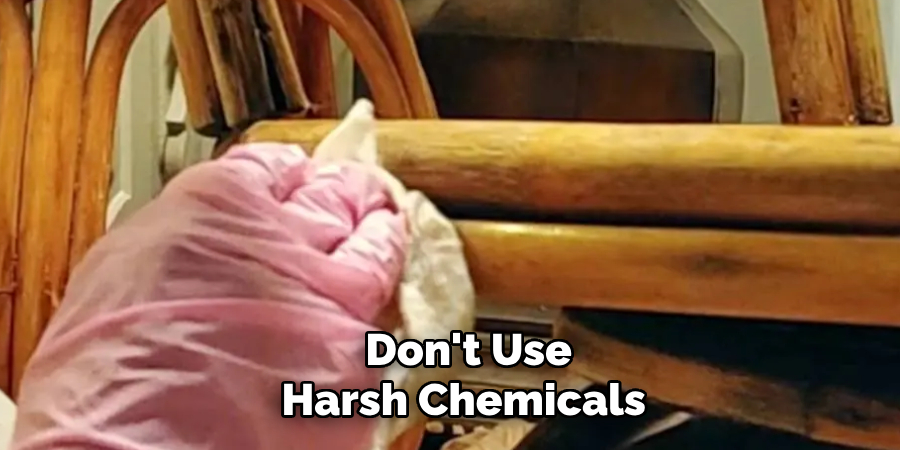
2. Oversaturating with Water: Rattan is a natural material susceptible to water damage. Oversaturating your furniture during the cleaning process can cause it to swell, warp, or become moldy. When cleaning, use a damp cloth rather than soaking the furniture, and always allow the rattan to dry completely in a well-ventilated area.
3. Ignoring Small Damages: Small damages, such as loose strands or minor breaks, can quickly escalate into larger problems if left untreated. Ignoring these minor issues can compromise the structural integrity of your furniture over time. Address any small damages as soon as they are noticed using wood glue or a rattan repair kit, and regularly inspect your furniture for signs of wear and tear.
4. Skipping Primer When Painting: If you choose to paint your rattan furniture, skipping the primer can lead to poor paint adhesion and an uneven finish. Primer acts as a base layer that helps the paint adhere better to the surface of the rattan, resulting in a more durable and polished look.
5. Exposing to Extreme Conditions: Extreme weather conditions such as excessive heat, cold, or humidity can harm rattan furniture. Prolonged exposure to direct sunlight can cause the rattan to dry out and become brittle, while excessive moisture can lead to mold and mildew.

With proper maintenance and care, your rattan furniture can withstand the test of time and remain a beautiful addition to your home.
Conclusion
How to restore rattan furniture requires a combination of careful cleaning, prompt repairs, and regular hydration.
By following the outlined steps, such as rehydrating the rattan, adding durable seat cushions, and ensuring proper positioning to avoid extreme weather exposure, you can significantly extend the lifespan of your furniture. Avoiding harsh chemicals, not oversaturating with water during cleaning, addressing small damages promptly, and using primer when painting is crucial to preserving the integrity and appearance of your rattan pieces.
Taking these measures will keep your rattan furniture looking beautiful and functional for many years, allowing you to enjoy its timeless charm and comfort in your living space.
